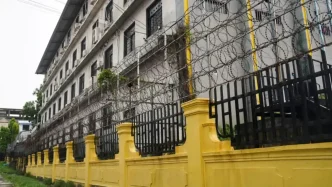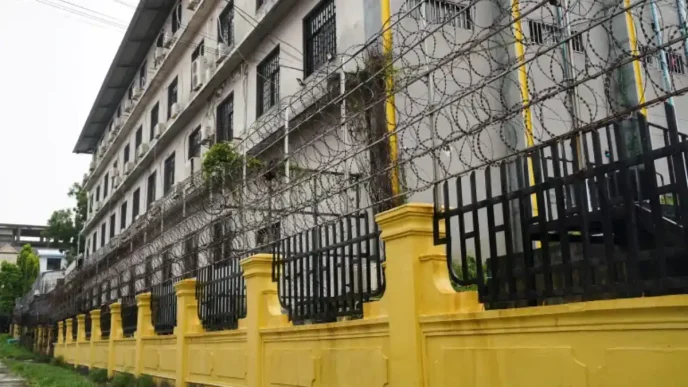Singapore is gearing up for a pivotal moment in its political calendar as Nomination Day on April 23, 2025, sets the stage for the General Election on May 3. With all 97 seats expected to be contested, the ruling People’s Action Party (PAP) faces challenges from 10 opposition parties, including the Workers’ Party (WP), in what promises to be a fiercely competitive race. As nomination proceedings close at noon today, the final line-ups of candidates remain shrouded in mystery, with the deployment of several political heavyweights still unclear. From potential retirements to surprise constituency switches, the day is poised to deliver significant revelations about the future of Singapore’s political landscape.
Uncertainty Surrounds PAP’s Key Figures
The PAP, which has dominated Singaporean politics since independence, is entering this election with several question marks over its leadership deployments. One of the most anticipated decisions is the future of Deputy Prime Minister Heng Swee Keat, who anchored East Coast Group Representation Constituency (GRC) in the 2020 election. Speculation abounds over whether he will remain in East Coast, move to another constituency, or step away from politics entirely. His potential departure would mark a significant shift, given his role as a key figure in the party’s fourth-generation leadership.
Elsewhere, Minister for Culture, Community and Youth Edwin Tong appears set to transition from Marine Parade GRC to East Coast GRC, following the absorption of his Joo Chiat ward into the latter. During a recent visit to Bedok on April 19, Minister in the Prime Minister’s Office Maliki Osman introduced Tong as the team’s leader. However, Tong downplayed the designation, emphasizing that “ministers are leaders of the GRC as a team” and noting DPM Heng’s continued presence as a minister. This ambiguity has fueled speculation about the final hierarchy within East Coast GRC.
Senior Minister Teo Chee Hean, another PAP stalwart, has added to the intrigue by announcing on April 21 that he will not contest the newly formed Pasir Ris-Changi GRC. Yet, he hinted at a willingness to “contribute” in other capacities, leaving open the possibility of a move to Punggol GRC. When pressed on the matter, Teo requested “a little bit of patience,” promising clarity by Nomination Day. Similarly, the slate for Tanjong Pagar GRC, currently anchored by Education Minister Chan Chun Sing, remains uncertain after Minister in the Prime Minister’s Office Indranee Rajah’s unexpected shift to Pasir Ris-Changi GRC.
Adding to the reshuffle, Senior Minister of State Janil Puthucheary, who serves in Pasir Ris-Punggol GRC, could be tapped to lead the newly carved-out Punggol GRC. While PAP teams in GRCs are traditionally led by full ministers, Puthucheary’s status as an incumbent and political office-holder makes him a strong candidate for the role. These potential reassignments highlight the strategic maneuvering within the PAP as it seeks to balance experience with fresh faces in key battlegrounds.
Opposition Strategies and Workers’ Party Moves
On the opposition front, the Workers’ Party (WP) has kept its electoral strategy under wraps, heightening anticipation for Nomination Day reveals. Party chief Pritam Singh, currently based in Aljunied GRC, is the subject of rumors suggesting a possible move to contest East Coast GRC—a constituency with symbolic weight given its competitive history. The deployment of other incumbent WP MPs, including Sylvia Lim, Faisal Manap, and Gerald Giam, remains unclear, with speculation that some may be fielded in new constituencies to broaden the party’s reach.
Among the WP’s new faces, Senior Counsel Harpreet Singh Nehal has been spotted engaging with residents in Marine Parade-Braddell Heights GRC, though there is chatter he could ultimately be fielded in East Coast GRC. Other candidates, such as Jimmy Tan, Andre Low, and Jasper Kuan, have been active in Tampines, while Dr. Ong Lue Ping has been seen in Punggol. Paris V. Parameswari, a new face, may be positioned in Punggol GRC to meet the constituency’s requirement for a candidate from an Indian or minority community. At an April 20 press conference, WP chief Pritam Singh urged voters to “understand how we have to determine what are the best prospects of success,” signaling a deliberate and calculated approach to candidate placement.
Of the 14 new candidates introduced by the WP, only two have confirmed constituencies: technology start-up director Kenneth Tiong in Aljunied GRC and town council senior property manager Abdul Muhaimin Abdul Malik in Sengkang GRC. This cautious rollout underscores the WP’s intent to maximize its electoral impact, potentially targeting PAP strongholds or constituencies with shifting demographics.
Emerging Candidates and Ground Activity
Both the PAP and WP have intensified ground efforts in hotly contested constituencies, offering clues about potential line-ups. In East Coast GRC, new PAP face Hazlina Abdul Halim is expected to take over the Siglap ward following Dr. Maliki Osman’s retirement announcement on April 21. Other emerging PAP candidates, such as Dinesh Vasu Dash, former chief executive of the Agency for Integrated Care, and former brigadier-general Goh Pei Ming, have been visible at community events alongside incumbent East Coast MPs. Goh has also been spotted in Punggol GRC, alongside former Ministry of Transport director Foo Cexiang, hinting at a possible deployment there.
The PAP has yet to unveil its candidates for five key constituencies: East Coast, Punggol, and Tanjong Pagar GRCs, as well as Radin Mas and Queenstown Single Member Constituencies (SMCs). This delay suggests a strategic approach to managing voter expectations and countering opposition momentum. Meanwhile, ground activity indicates potential multi-cornered fights in at least four constituencies, including a possible four-way contest in Tampines GRC involving the PAP, WP, National Solidarity Party, and People’s Power Party. Three-cornered battles are also shaping up in Ang Mo Kio and Sembawang GRCs, as well as Potong Pasir SMC.
In past elections, many multi-cornered contests narrowed to one-on-one duels with the PAP as opposition parties coordinated to avoid splitting the vote. This year, while some opposition groups have signaled a willingness to step back from certain areas after closed-door discussions, it remains uncertain whether broader coordination will emerge. The outcome of these negotiations could significantly influence the electoral dynamics on May 3.
Retirements and Transitions in the PAP
The lead-up to Nomination Day has seen a wave of retirements among PAP veterans, signaling a generational transition within the party. Defence Minister Ng Eng Hen and Dr. Maliki Osman, both of whom have served five terms since 2001, are among those stepping down. Senior Minister of State for Transport and Sustainability and the Environment Amy Khor, as well as two-term MP for Bishan-Toa Payoh GRC Chong Kee Hiong, have also announced their retirements. Several first-term MPs, including Chua Chu Kang GRC’s Don Wee and Ang Mo Kio GRC’s Ng Ling Ling, will not stand for re-election.
According to reports, around 20 PAP MPs are expected to retire before the upcoming election, with some, like Sembawang GRC’s four-term MP Lim Wee Kiak and Jurong GRC’s Dr. Tan Wu Meng, either confirming or strongly hinting at their exits. Others, such as Senior Minister of State for Defence Heng Chee How from Jalan Besar GRC and Potong Pasir SMC’s Sitoh Yih Pin, have remained vague about their plans. This turnover reflects the PAP’s ongoing efforts to renew its ranks while maintaining continuity in governance—a balancing act that will be closely watched by voters and analysts alike.
Electoral Boundaries and Strategic Implications
The redrawing of electoral boundaries, unveiled on March 11, has reshaped the battlefield for the 2025 General Election. Political parties have wasted no time staking claims on newly configured constituencies, with ground activity intensifying in areas like Punggol GRC and Pasir Ris-Changi GRC. These changes, combined with the high number of retirements and potential candidate switches, introduce an element of unpredictability into an election already marked by intense competition.
For the PAP, the challenge lies in maintaining its dominance amid a wave of retirements and the need to integrate new faces into leadership roles. The opposition, particularly the WP, sees an opportunity to capitalize on voter sentiment and expand its footprint beyond traditional strongholds like Aljunied and Sengkang GRCs. The possibility of multi-cornered fights adds another layer of complexity, as vote-splitting could either dilute opposition gains or create openings for unexpected outcomes.
Looking Ahead to May 3
As Nomination Day unfolds, Singaporeans are bracing for surprises that could redefine the contours of the General Election. The decisions made today—whether DPM Heng Swee Keat stays or moves, where Pritam Singh contests, or how multi-cornered fights resolve—will set the tone for the campaign ahead. With all 97 seats in play and opposition parties mounting a robust challenge, the stakes have rarely been higher. As the nation watches, one question looms large: will the 2025 election mark a turning point in Singapore’s political history, or will the PAP’s enduring grip hold firm?














